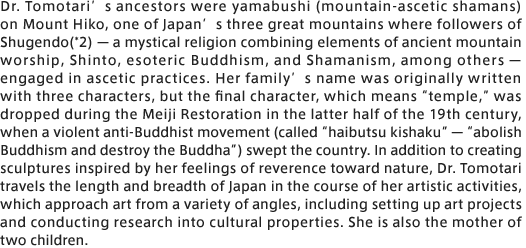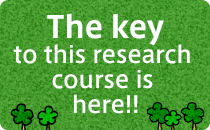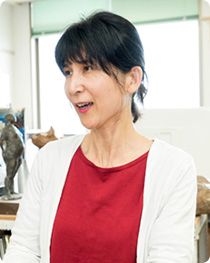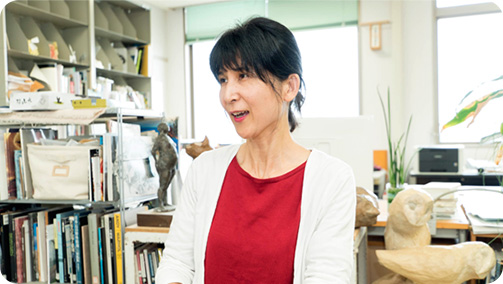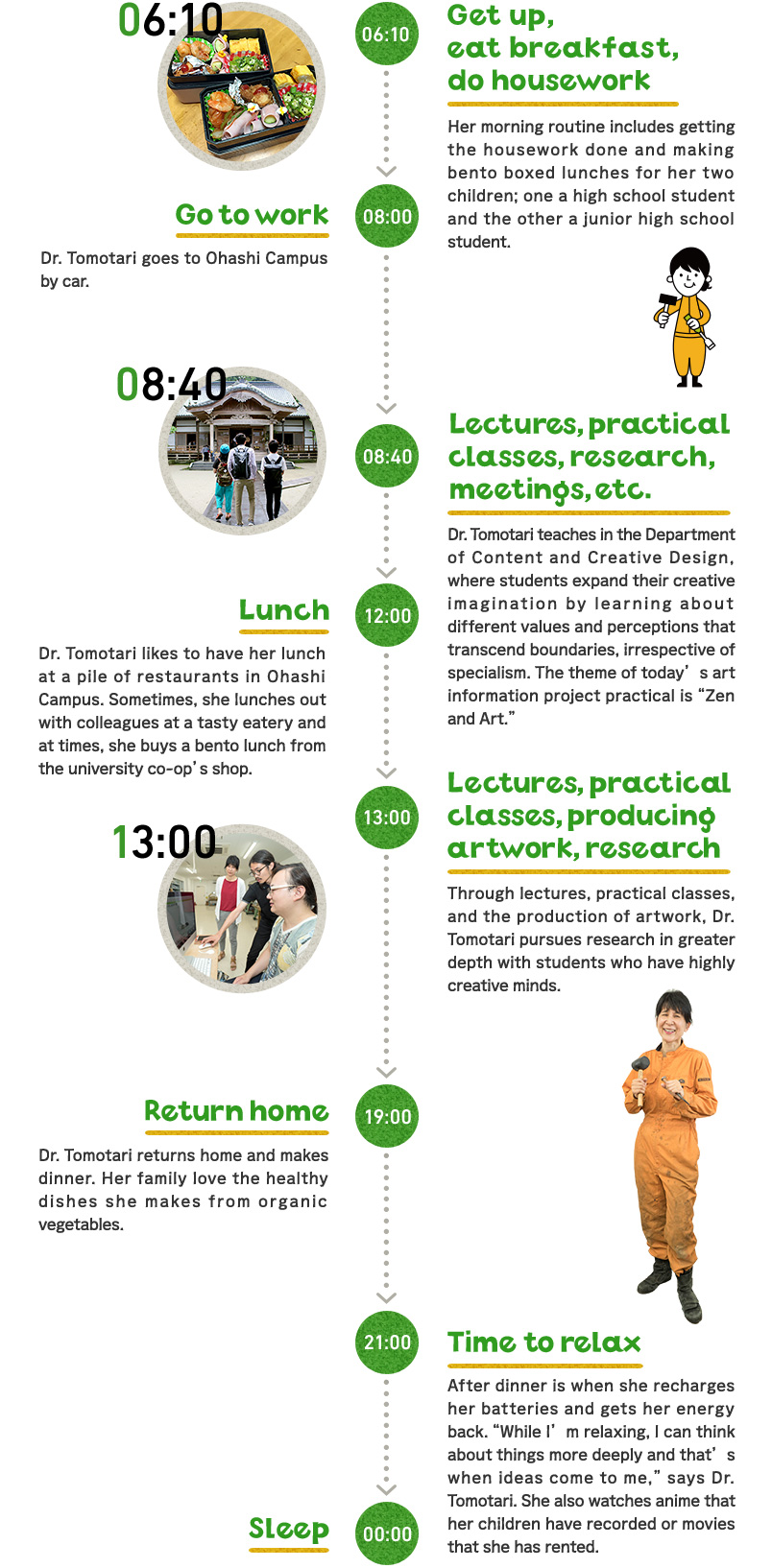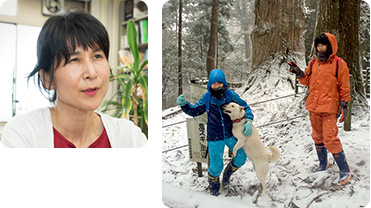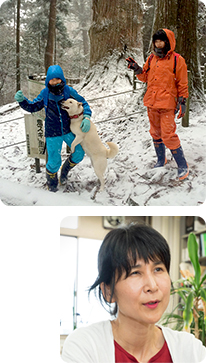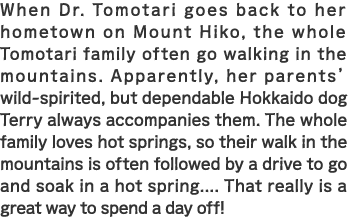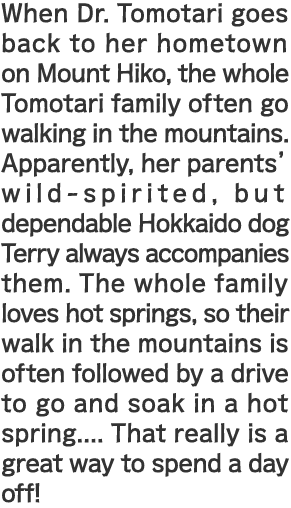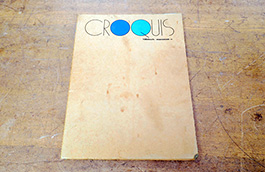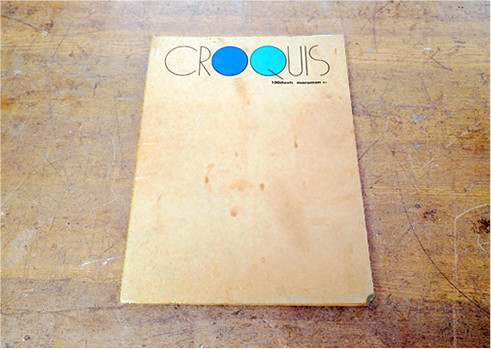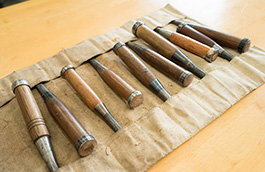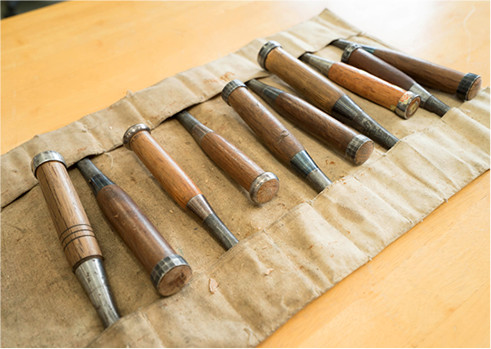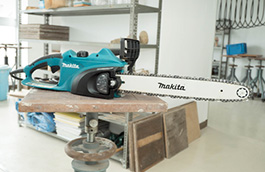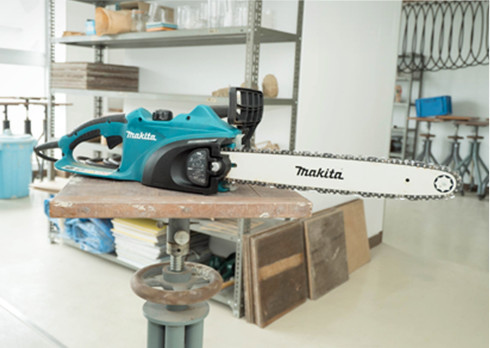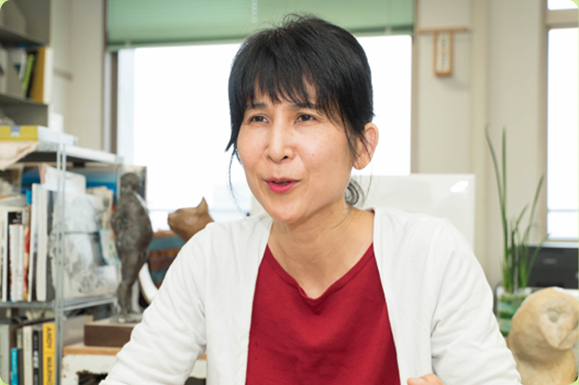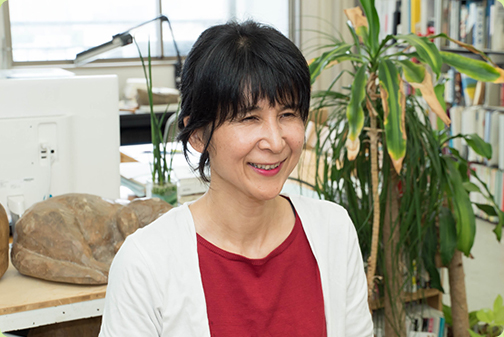 Dr. Tomotari always has a smile on her face. Combining multiple roles of sculptor, researcher, and mother of two, you realize how energetic she is!
Dr. Tomotari always has a smile on her face. Combining multiple roles of sculptor, researcher, and mother of two, you realize how energetic she is!
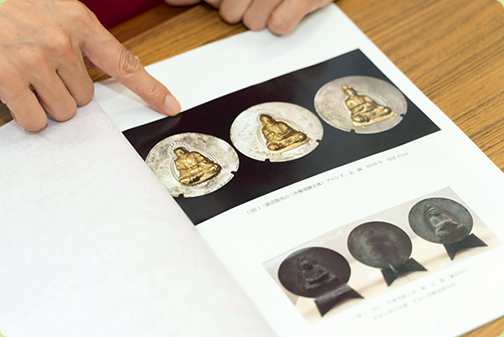 The images of Mount Hiko's three avatars were originally made in the Kamakura period (1185–1333). They have been designated as an Important Cultural Property by the government, so Dr. Tomotari could not make a mold from them directly. Instead, she used a 3D scanner to measure them from multiple angles and analyzed their shape. She says that it was a very delicate process that required a lot of patience.
The images of Mount Hiko's three avatars were originally made in the Kamakura period (1185–1333). They have been designated as an Important Cultural Property by the government, so Dr. Tomotari could not make a mold from them directly. Instead, she used a 3D scanner to measure them from multiple angles and analyzed their shape. She says that it was a very delicate process that required a lot of patience.
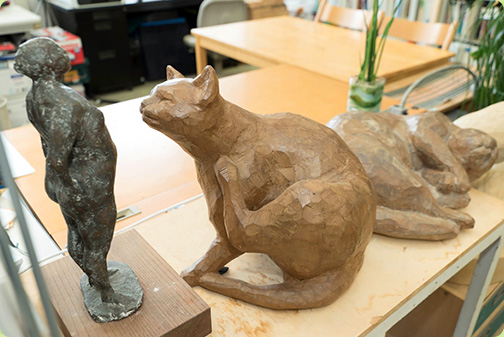 Sculptures are dotted around Dr. Tomotari's office. A particular favorite of hers is "Time of the Cat," which she donated to Fukuoka Women's University Art Museum and which visitors can actually touch to feel its shape.
Sculptures are dotted around Dr. Tomotari's office. A particular favorite of hers is "Time of the Cat," which she donated to Fukuoka Women's University Art Museum and which visitors can actually touch to feel its shape.
 Dr. Tomotari always has a smile on her face. Combining multiple roles of sculptor, researcher, and mother of two, you realize how energetic she is!
Dr. Tomotari always has a smile on her face. Combining multiple roles of sculptor, researcher, and mother of two, you realize how energetic she is!
My specialization is research into sculptures using wood and iron; alongside the production of artworks, my work involves examining art itself. I am also interested in the creation of new social structures through the medium of art, so I also conduct research into various cultural properties and art projects aimed at contributing to society.
 The images of Mount Hiko's three avatars were originally made in the Kamakura period (1185–1333). They have been designated as an Important Cultural Property by the government, so Dr. Tomotari could not make a mold from them directly. Instead, she used a 3D scanner to measure them from multiple angles and analyzed their shape. She says that it was a very delicate process that required a lot of patience.
The images of Mount Hiko's three avatars were originally made in the Kamakura period (1185–1333). They have been designated as an Important Cultural Property by the government, so Dr. Tomotari could not make a mold from them directly. Instead, she used a 3D scanner to measure them from multiple angles and analyzed their shape. She says that it was a very delicate process that required a lot of patience.
When I create artworks, I consciously seek to give something back to society with that work. The fascination of sculpture lies in creating its depth — something that you cannot see, but can understand if you touch it, which you have to create by making decisions based on its mass. If you close your eyes and touch it, you will definitely find it there and it will respond to you. In brief, my decision to choose sculpture was an act of resistance against forgetting. Sculptures can be used to exhibit and visually aids in proving an object's existence — "this used to be here" — or an intangible impression, such as a memory or perception. I want everyone to value the opportunity to look at and touch my works as a chance for each person to stop and have a dialogue with themselves about what they feel, or think, or recall....
 Sculptures are dotted around Dr. Tomotari's office. A particular favorite of hers is "Time of the Cat," which she donated to Fukuoka Women's University Art Museum and which visitors can actually touch to feel its shape.
Sculptures are dotted around Dr. Tomotari's office. A particular favorite of hers is "Time of the Cat," which she donated to Fukuoka Women's University Art Museum and which visitors can actually touch to feel its shape.
I created a work for the Nibutani Project, which was launched in the wake of the Hokkaido Nibutani Dam lawsuit (*1). As I talked face-to-face with Ainu people, I was overwhelmed by Ainu history and developed a powerful desire to create a work of art that would bring forth the memories of that land and the history of the Ainu people. I spent about a year carving the piece of black marble that became the 1.6-meter-high "Recollection — Nibutani Dam." The place where Ainu once lived has been drowned by the waters of the dam, but that figure continues to bear witness to the existence of the Ainu.
I also undertake art research focused on Shugendo. In 2016, I restored the images of Mount Hiko's three avatars, which were damaged during the wave of anti-Buddhist sentiment that swept the country in the Meiji period. This was the catalyst for reviving the sacred fire ritual of the yamabushi called goma-daki, which had not been practiced since the Meiji period. In this ritual, the images of Mount Hiko's three avatars as they would have looked in the days when Shugendo was thriving were enshrined on the altar as objects of worship containing the spirit of the deities, enabling the ritual to be performed in the same way that Shugendo practitioners had done from the Kamakura period right through to the Meiji period. The restoration of the lost core of this community and its culture gave me a very real sense that such restoration work can provide support with the aid of modern technology.
In the Faculty of Design, I am involved in various art projects as a core member of the Social Art Lab, which focuses on art practice that engages with social issues and creates new relationships between people and environments. Society is formed by the flow of people's impressions and perceptions, as is art. It is not that something is contained within the artwork itself; rather, a work of art evokes impressions and is a place where feelings and senses intersect. This interaction of feelings/senses changes perceptions both within a community and outside it, providing an opportunity to revitalize that community. Based on this approach, I am also devoting my energies to creating centers for tourism that tap into the local community and culture. I believe that one role of my research is to explore future directions that will enable people to live happier lives in the future, through the accumulated effects of artistic activities.
(*1) The Shugendo concept of keeping Shinto and Buddhist deities separate while learning about each other.
(*2)A lawsuit brought over the construction of the Nibutani Dam in Hokkaido, which saw the first official discussion of the indigenous nature of the Ainu people.


Asking "What is art?" is very similar to asking "What is a human?" The accumulation of people's answers is art — it's the study of continual questioning. By thinking about what we feel and giving shape to it, we can affirm our own existence; when others view our work, we can affirm each other's existence. Arousing the imagination enables you to influence people's consciousness.
Art is also a forum for communication. When war between Israel and Iran seemed imminent, an Israeli graphic designer created a poster with the message, "Iranians...we [heart] you." and shared it on social media, which led to Iranians responding in kind. That poster campaign spread across the globe. This is the essence of "communication art" and it's something that can only be achieved through art.
Many people say that you can't make money from art, but art is actually a field of study that contains the things that make us human: it's a branch of learning that inspires love. Even art that lacks skill can speak to us; an artwork doesn't function as an artwork unless it's centered on deep emotion or a concept. In fact, I'd go so far as to say that I feel a kind of magical power in the joy and fascination of creating new worlds through art's potential to get to people's very core.
Reference: "Israel and Iran: A love story?"

![]()
